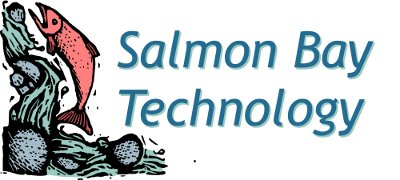In today’s fast-paced and dynamic business landscape, staying ahead of the competition requires adaptability, innovation, and embracing cutting-edge technologies. However, many organizations are still grappling with the burden of outdated legacy systems, under-utilized tools, and old technology, which can significantly hamper productivity and negatively impact the bottom line. In this blog post, we’ll explore the challenges posed by such archaic setups and the transformative power of modernizing and investing in up-to-date solutions.
The Hidden Cost of Outdated Legacy Systems
Outdated legacy systems can be likened to ball-and-chain, restricting an organization’s agility and hindering growth. These systems were once state-of-the-art but have since become obsolete or unsuitable for modern business demands. The longer an organization clings to these systems, the more it can drain productivity and waste valuable resources.
1. Inefficiency: Legacy systems often lack the integration capabilities of modern technologies, leading to manual and time-consuming processes. This inefficiency can hinder collaboration and communication among teams, resulting in delayed projects and missed opportunities.
2. Maintenance Costs: As legacy systems become older, their maintenance and support costs soar. Vendors may discontinue support, making it increasingly difficult to fix issues, leading to prolonged downtime and disrupted workflows.
3. Security Risks: Outdated technology is vulnerable to cyber threats, as they lack the robust security features of contemporary solutions. Cyberattacks can result in data breaches, loss of sensitive information, and reputation damage, with severe financial repercussions.
4. Limited Scalability: Legacy systems often struggle to keep up with expanding business requirements. They may not have the flexibility to accommodate growth, leading to additional expenses when upgrading or migrating to new systems.
Unleashing the Potential of Under-utilized Tools
Organizations frequently invest in expensive tools and software, intending to streamline processes and enhance productivity. However, due to insufficient training, resistance to change, or lack of awareness, these tools may remain under-utilized and fail to deliver the desired returns on investment.
1. Training and Education: Proper training and education are essential for employees to maximize the potential of tools and technology at their disposal. Investing in continuous learning and skill development can empower the workforce to leverage tools effectively.
2. Cultivating a Tech-Savvy Culture: Fostering a culture that embraces technology and innovation can encourage employees to explore and experiment with new tools. Creating a supportive environment that encourages curiosity and learning can lead to more efficient workflows.
3. Regular Audits and Evaluations: Conducting periodic audits to assess tool usage and effectiveness can identify areas where improvements are needed. This data-driven approach allows businesses to make informed decisions about optimizing their toolset.
Harnessing the Power of Modern Technology
To stay competitive and drive growth, businesses must prioritize modernizing their technology stack and embracing new solutions.
1. Cloud Computing: Moving operations to the cloud provides numerous benefits, including enhanced scalability, cost-efficiency, and improved accessibility for remote teams.
2. Automation and AI: Embracing automation and AI-driven solutions can streamline repetitive tasks, reduce errors, and free up valuable human resources to focus on more strategic initiatives.
3. Data Analytics: Leveraging data analytics enables businesses to make data-driven decisions, identify trends, and spot opportunities for optimization and growth.
4. Collaborative Platforms: Investing in collaborative tools and platforms fosters seamless communication and teamwork among employees, irrespective of their physical location.
Conclusion
In conclusion, the impact of outdated legacy systems, under-utilized tools, and old technology on an organization’s productivity and profitability cannot be underestimated. By acknowledging the challenges and embracing the opportunities presented by modern solutions, businesses can unleash their true potential. Prioritizing technology upgrades, investing in training, and cultivating a tech-forward culture are essential steps toward breaking free from the chains of the past and embracing a brighter, more productive future. By taking these steps, businesses can remain agile, competitive, and poised for success in today’s rapidly evolving business landscape.

0 Comments